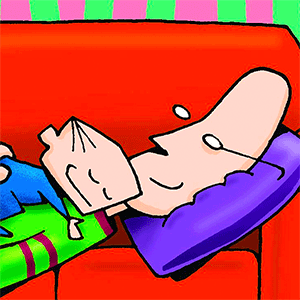Thousands of Central Floridians expected to get power back this weekend
Published in Weather News
ORLANDO, Fla. — Tens of thousands of Central Floridians were still waiting to have their power restored on Friday, a day after Hurricane Milton ripped through the region, but local utilities promised most customers would get their lights turned back on this weekend.
One of the area’s largest providers, the Orlando Utilities Commission, said most of its more than 30,000 customers still in the dark could expect their power back by the end of Saturday, with the remainder coming Sunday. And Duke Energy, which has more than 100,000 customers without power in Orange, Osceola, Lake and Seminole counties, said it expects to restore service to most of Central Florida by the end of Sunday.
But just as one Hurricane Milton-spawned crisis was passing, another loomed.
In Seminole, county leaders warned of major flooding in the coming days in communities along the slowly-rising St. Johns River — including near Lake Harney, Geneva, Lake Monroe and Lake Jesup. County crews are once again opening up sandbag sites in Geneva, Sanford and in the Midway community for residents likely to be affected.
The news came as residents and officials across the state tallied Milton’s toll so far: At least 17 dead, including one man in Orange who stepped on a downed power line, and millions of dollars in damage, especially in the hard-hit Gulf Coast near Tampa and south, and along the southern Atlantic Coast where storm surge and tornadoes wreaked havoc.
By those measures, Central Florida was fortunate, with most of the impact a temporary inconvenience. On Friday, nearly 200,000 of the more than 1.3 million total utility customers in Orange, Lake, Osceola and Seminole counties were still without electricity, according to poweroutage.us, which collects data from utilities nationwide. Utility managers blamed most of the outages on downed powerlines, which can be repaired far more quickly than more severe damage to electrical infrastructure.
Across Florida, more than 2 million of the state’s 11 million utility customers remained without power Friday afternoon, with the lion’s share of the outages in the Tampa Bay area and along the south-central Gulf Coast, according to poweroutage.us.
But Central Florida residents were still feeling Milton’s sting. A man named Bert who didn’t want to give his last name slowly rode his bike around west Seminole County’s Hunt Club neighborhood on Friday, periodically holding his cellphone in the air above his head, searching for any small amount of cell service he could tap into to access the internet and text friends.
“We’re kind of used to this,” said Bert, who has lived in the neighborhood for more than a decade. “We have a small generator that we use to plug in our refrigerator and fans at night. In the morning, we unplug the fans and plug it into a coffee machine, to make coffee. We’ve offered some of it to our neighbors.”
He lost power Thursday morning, just after midnight.
“Nobody got hurt,” he said. “Our house is fine. That’s what’s important.”
In Longwood, Ernie Gonzalez raked leaves in front of the home he and his family rent. He too was hoping for the power trucks to roll through the small enclave off Rangeline Road after losing his power about 4 a.m. on Thursday.
“I haven’t seen any yet,” he said with a laugh. “I’m hoping it’s soon. Because if it’s got hot, it’s going to be tough sleeping at night.”
Seminole County Commissioner Amy Lockhart also was among the nearly 50,000 Seminole customers without power on Friday. But she and her family prepared to spend several days without power by hooking up a generator that powers their refrigerator, a hot water heater, fans, lights and other appliances.
“During the 2004 storms, we did without a generator, and we saw what that was like,” Lockhart said, referencing powerful hurricanes that year, including Charley, that knocked out power for 10 days in her neighborhood and large portions of Central Florida.
While some neighborhoods were still completely in the dark Friday, Orlando’s Lake Como community along Bumby Avenue was sharply split between the power haves and have-nots. Half of homes facing Lake Como blazed with lights Thursday night. The other residents, like Lauren Tuttle, her husband Nick and their 4-year-old daughter, huddled around flashlights.
“It sucks,” she said. “But I’m from New Orleans and used to it. And I have friends in western North Carolina where it’s a lot worse.”
Also along Buckminster Circle, Jewell Connell, her husband, Nick, and next-door neighbor Jason Bell watched as workers hoisted a new transformer to the top of a utility pole that had been mangled. The three sat in lawn chairs with cold beverages, waiting patiently to get their power back.
They agreed on two things: This week’s hurricane wasn’t nearly as damaging and disruptive as Hurricane Charley 20 years ago, and Charley happened in August, while Milton chose a much cooler month. They weren’t particularly frustrated with the wait to have their power restored.
“We are just happy to see the crews here today,” Nick Connell said.
While most of the area did not experience flooding as severe as it did two years ago, when Hurricane Ian swept through the state, the danger has not passed for communities along the St. Johns River, which commonly overflows days after heavy rain. The St. Johns River flows northward, bringing stormwater from areas to the south, including Brevard, Osceola and Orange counties into Seminole County. State Road 46, in particular, is expected to experience flooding, officials said.
“The St. Johns continues to increase,” Seminole Director of Emergency Management Alan Harris said Friday about the current water levels. “But it does show some possibility that it’s leveling off ... It will be high, but not at the catastrophic levels that we had after Ian.”
_____
©2024 Orlando Sentinel. Visit at orlandosentinel.com. Distributed by Tribune Content Agency, LLC.







Comments